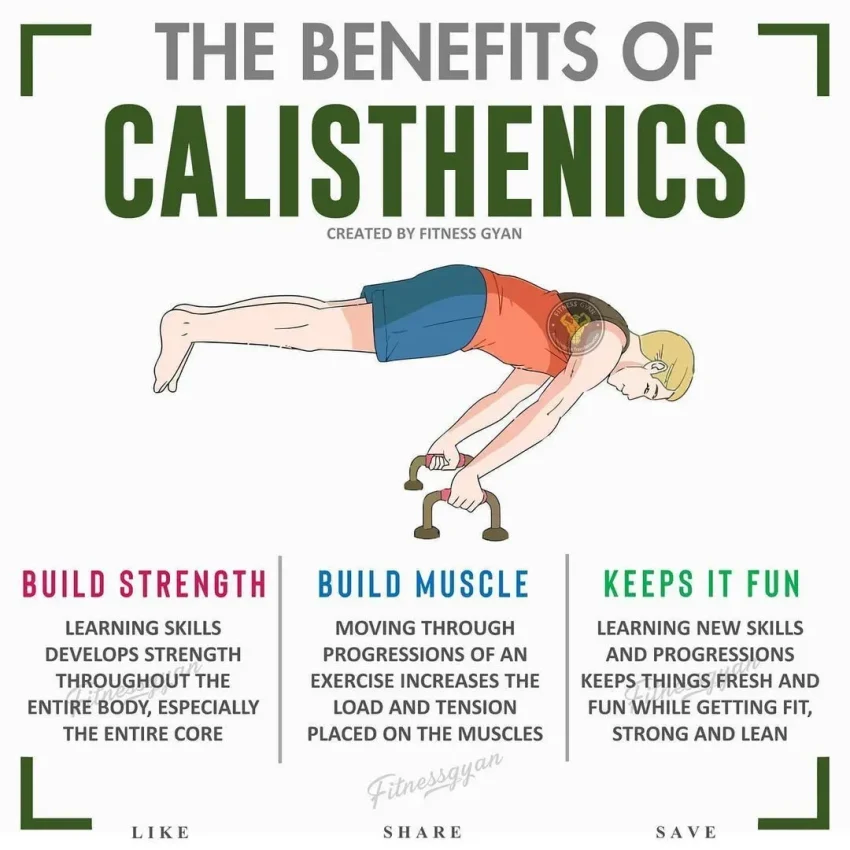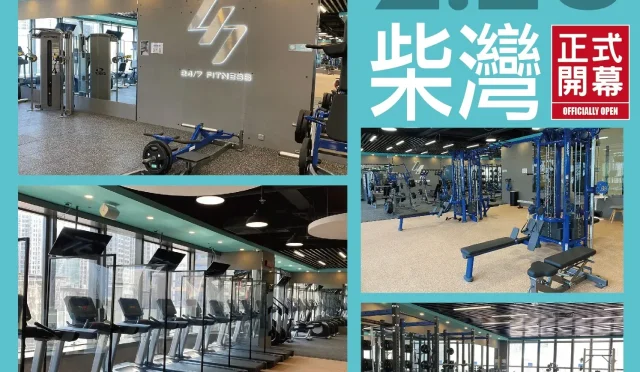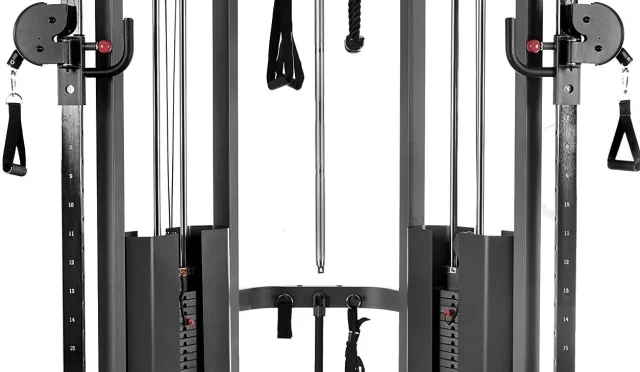Calisthenics benefits extend far beyond mere physical conditioning; they encompass psychological effects that can significantly enhance your social interactions and career prospects. Engaging in bodyweight training not only builds strength and endurance, but also influences how others perceive you through mechanisms like the halo effect. Individuals who look fit often exude confidence and reliability, making them more appealing in both personal and professional settings. Additionally, the discipline required for calisthenics fosters a healthier self-image, reinforcing a cycle of positive reinforcement and empowerment. In essence, the psychology of fitness reveals that looking fit offers substantial advantages that are vital in today’s highly competitive environment.
The advantages of fitness training, particularly through bodyweight exercises, can substantially impact one’s lifestyle and opportunities. Such exercises not only enhance physical prowess but also elevate one’s perceived value in social and professional situations. Engaging in functional strength training cultivates a robust physique that resonates with the innate human bias towards outward appearance, commonly referred to as the halo effect. These attributes contribute to a more dynamic presence, which can lead to increased trust and cooperation from peers. By prioritizing fitness, individuals can leverage these advantages, enhancing both their self-perception and public reception.
The Hidden Psychology Behind Fitness Appearance
The way we perceive others is significantly influenced by their physical appearance, particularly in the context of fitness. Psychological studies show that individuals who appear fit are often deemed more capable, attractive, and trustworthy. This phenomenon isn’t merely superficial; it stems from deep-seated evolutionary traits where physical health signaled survivability and strength. Therefore, the psychology of fitness extends beyond personal health and fitness levels—it shapes interpersonal dynamics and first impressions across various aspects of life.
People naturally gravitate toward those who convey strength and vitality, associating these traits with positive attributes such as reliability and confidence. The implications of this are profound; those who commit to a calisthenics training regimen often find that their improved appearance not only boosts their self-esteem but alters how others interact with them. While training for health benefits is critical, understanding the psychological benefits of looking fit can provide added motivation to improve one’s physical condition.
Calisthenics Benefits: More Than Just Physical Strength
Calisthenics, a form of exercise that utilizes bodyweight movements, offers a range of benefits that enhance physical appearance and psychological well-being. These exercises improve strength, flexibility, and overall body control. The repetitive action of performing movements like push-ups, squats, and pull-ups leads to visible changes in body composition, promoting a lean and athletic physique. This transformation can bolster one’s self-image, which in turn can elevate confidence levels in social situations, including job interviews and networking events.
Moreover, calisthenics encourages individuals to develop a disciplined routine that fosters a sense of achievement. This discipline can further enhance one’s appeal to others, as it aligns with the previously mentioned halo effect. When people observe an individual consistently training, they equate this dedication to other traits such as ambition and reliability. Thus, the advantages of calisthenics extend beyond physical enhancement; they create a ripple effect that can lead to increased social opportunities and personal success.
The Impact of First Impressions: Thin-Slicing in Fitness
Thin-slicing refers to the subconscious judgments we make about others based on minimal information. Research shows that physical fitness plays a crucial role in thin-slicing, as people often make snap decisions about an individual’s social status and capabilities within seconds of encountering them. Those who engage in regular calisthenics training often come across as more attractive and competent because their commitment to fitness suggests a level of discipline and self-care—a trait many find appealing.
In professional settings, this means that candidates who appear fit have an edge, as their physique can unconsciously project leadership qualities and an ability to handle pressure. Additionally, the initial judgments formed in these brief encounters can have lasting effects on relationships and career opportunities. Therefore, embracing a calisthenics routine not only enhances physical appearance but also positively influences how one is perceived in high-stakes environments.
Harnessing the Halo Effect of Fitness
The halo effect plays a critical role in how individuals assess capabilities based on overall appearance. When someone looks fit and healthy, their perceived attributes—such as intelligence and trustworthiness—are often magnified, regardless of the actual skill level. This cognitive bias can significantly affect personal and professional interactions, giving physically fit individuals a notable advantage in leadership roles and collaborative environments.
By participating in calisthenics, individuals don’t just improve their physical fitness; they also cultivate the factors that enhance public perception. As others attribute higher levels of competence and reliability to those who look healthy, the opportunities for networking and career advancement can multiply significantly. Thus, the halo effect is a powerful motivator to maintain consistent fitness training, knowing that the positive external perceptions can lead to real-life advantages.
Real-World Advantages of a Fit Appearance
Studies reveal that individuals who maintain an active lifestyle and present a fit appearance often experience greater success in various aspects of life. From hiring practices to social interactions, a fit individual is frequently viewed as more credible and persuasive. For instance, research published in psychological journals indicates that employers are more likely to favor candidates who exhibit a healthy physique, associating this with good work ethic and the ability to thrive in challenging positions.
The advantages are even apparent in sales roles, where consumers tend to react more favorably to individuals who look physically fit. This preference can be attributed to a subconscious belief that fit individuals possess higher levels of energy and enthusiasm. Consequently, participating in calisthenics not only aids personal health but strategically positions individuals to reap the benefits of being seen as a more appealing candidate in both social and professional domains.
Building Confidence Through Calisthenics and Fitness
Training through calisthenics provides more than just physical gains; it fosters psychological resilience and increases self-confidence. As individuals progress through different levels of calisthenics exercises, they develop a sense of mastery over their bodies, which often translates to improved self-esteem. This newfound confidence can transform how one engages with others, leading to more successful interactions in both personal and professional spheres.
Furthermore, the act of achieving physical milestones through calisthenics can create a positive feedback loop. As people notice their physical changes, they are likely to feel more self-assured, reinforcing their motivations to continue training. This relationship enhances the psychological benefits associated with fitness appearance, empowering individuals to pursue opportunities they might have previously shied away from. Hence, investing in a calisthenics program can bring about both aesthetic transformations and deeply rooted confidence that adds value to all facets of life.
Social Dynamics: The Influence of Looking Fit
The phenomenon of looking fit holds significant sway over social dynamics and interpersonal relationships. Individuals who present themselves as healthy and athletic often experience an increase in social opportunities due to the inherent biases present in human psychology. People are generally more approachable toward those who are fit, leading to expanded networks and deeper connections, whether in social gatherings or in professional environments.
For many, this aspect of fitness is a pivotal reason behind their commitment to a training routine. The calisthenics community, in particular, fosters a spirit of camaraderie and support that accentuates these social benefits. Participating in group workouts or even sharing fitness accomplishments on social media can further enhance these interactions, leading to a web of positivity and mutual encouragement that can elevate one’s social standing.
Training for Success: The Unexpected Benefits of Looking Fit
While most focus on the physical benefits of fitness training, such as stamina and strength, it’s essential to also recognize the unexpected advantages that come from looking fit. Studies suggest that individuals who maintain an athletic appearance are more likely to be chosen for promotions, leadership roles, and public appearances. This stems from the subconscious traits associated with fitness; an individual who looks healthy conveys not just discipline but also an energetic presence that can invigorate a team.
Moreover, when embarking on a calisthenics journey, the process itself teaches perseverance and resilience, qualities that are highly sought after in the workplace. The psychological impact of consistently improving physical abilities creates a sense of achievement that boosts overall morale, ultimately facilitating personal and professional growth. Thus, looking fit becomes a strategic asset that can drive success beyond the gym.
The Importance of Lifestyle Choices in Fitness
For individuals committed to enhancing their fitness levels, adopting a holistic approach that encompasses lifestyle choices is paramount. Nutrition, recovery, and consistent training play pivotal roles in shaping physical appearance and overall health. Those who engage in calisthenics must complement their workouts with a balanced diet and proper restorative practices to maximize training benefits. Such alignment not only improves physical performance but significantly enhances how one is perceived by others.
Through a healthy lifestyle, the discipline required in one’s fitness routine extends into other aspects of life, influencing productivity and personal relationships. When one prioritizes health and wellness, it resonates to others, creating a perception of an individual who values self-care and commitment. As such, the journey of physical fitness transforms into a broader narrative of lifestyle—a narrative that ultimately underscores the importance of looking fit as a key to unlocking numerous opportunities.
Frequently Asked Questions
What are the main calisthenics training benefits for fitness enthusiasts?
Calisthenics training benefits include increased strength, endurance, and flexibility without the need for heavy weights. This bodyweight training method enhances functional fitness, improves overall physical appearance, and promotes a healthier lifestyle, making it an excellent choice for those seeking to enhance their fitness levels.
How does the psychology of fitness enhance the advantages of calisthenics?
The psychology of fitness ties closely with the benefits of calisthenics as it positively influences self-perception and boosts confidence. By improving one’s physical appearance through consistent calisthenics training, individuals may experience a heightened sense of self-worth and social credibility, leading to greater opportunities in personal and professional spheres.
What is the halo effect in relation to looking fit from calisthenics workouts?
The halo effect suggests that individuals who appear fit due to calisthenics training are often perceived as more competent, reliable, and intelligent. This cognitive bias can provide a significant advantage in social and professional settings, leading to increased trust and better networking opportunities.
Can calisthenics contribute to better job prospects due to its benefits?
Yes, calisthenics can positively influence job prospects. Studies indicate that physically fit candidates, often resulting from calisthenics training, are rated as more employable and likely to succeed. Their fit appearance can enhance first impressions, leading to increased confidence during interviews.
What are the mental health benefits of incorporating calisthenics into a fitness routine?
Incorporating calisthenics into your fitness routine offers numerous mental health benefits, including reduced anxiety and enhanced mood. The regular physical activity stimulates endorphin release, which can lead to improved emotional well-being and a more positive self-image.
How can looking fit from calisthenics affect social interactions?
Looking fit due to calisthenics can significantly enhance social interactions. Individuals who have a healthy appearance often experience greater social trust and receptiveness from others, which can lead to stronger relationships and networking opportunities.
Does calisthenics training impact the body image and self-confidence?
Yes, calisthenics training can significantly impact body image and self-confidence. As individuals progress and see improvements in their strength and physique, they typically experience a boost in self-esteem and a more positive outlook on their physical appearance.
What is thin-slicing and how does it relate to the benefits of calisthenics?
Thin-slicing refers to the ability to make rapid judgments based on minimal information. In the context of calisthenics benefits, looking fit can lead to instant positive impressions in various situations, enhancing social interactions and perceived competence within seconds of meeting someone.
| Key Points |
|---|
| Calisthenics enhances physical appearance, which influences social and professional perceptions. |
| Thin-slicing affects first impressions; people form judgments about competence in seconds. |
| The halo effect links appearance to perceived traits, such as reliability and competence. |
| Fitter individuals are often seen as more employable and likely to succeed. |
| Physical fitness builds self-image and can lead to a cycle of confidence and achievement. |
| Training with calisthenics promotes a strong physique without sacrificing function. |
Summary
Calisthenics benefits extend far beyond mere physical conditioning; they play a pivotal role in shaping perceptions that can lead to greater social and professional opportunities. When individuals engage in calisthenics, they not only improve their strength and endurance but also significantly enhance their appearance, which positively influences how they are perceived by others. This psychology of looking fit highlights the importance of appearance in creating first impressions, fostering trust, and opening doors in professional settings. Embracing calisthenics not only leads to a healthier body but also contributes to a more confident self-image, further amplifying these benefits.








